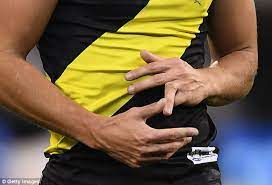Physiotherapy exercises are a vital component of any rehabilitation program, and they are designed to help individuals recover from injuries or illnesses that have affected their mobility, strength, and overall quality of life. While it may be tempting to skip these exercises or only do them occasionally, there are several compelling reasons why you should prioritize them and make them a regular part of your daily routine.
Improve Range of Motion and Flexibility
Physiotherapy exercises can help you regain your range of motion and flexibility, which is crucial for maintaining good physical health. When you have an injury or illness that affects your ability to move, your muscles and joints can become stiff and rigid. Physiotherapy exercises can help to loosen these areas up and allow you to move more freely, which can help to reduce pain and discomfort.
Strengthen Muscles and Improve Stability
Many physiotherapy exercises are designed to strengthen your muscles and improve your overall stability. This can be particularly important if you have suffered an injury or illness that has left you weak or unsteady on your feet. By working on these areas through targeted exercises, you can improve your strength and balance, which can help to prevent further injuries and improve your overall quality of life.
Reduce Pain and Discomfort
Physiotherapy exercises can also help to reduce pain and discomfort in the body. This is achieved through a variety of techniques, including stretching, massage, and strengthening exercises. By targeting specific areas of the body that are causing pain or discomfort, you can help to alleviate these symptoms and improve your overall sense of well-being.
Speed up Recovery Time
When you have an injury or illness, the recovery process can be long and frustrating. However, by incorporating physiotherapy exercises into your daily routine, you can speed up your recovery time and get back to your normal activities more quickly. This is because physiotherapy exercises are designed to target the specific areas of the body that need attention, which can help to speed up the healing process.
Prevent Future Injuries
One of the most important benefits of physiotherapy exercises is their ability to prevent future injuries. By strengthening your muscles, improving your range of motion, and enhancing your stability, you can reduce your risk of getting injured again in the future. This can be particularly important for athletes and individuals who are prone to injury, as it can help to keep them healthy and active for longer.
In conclusion, there are many compelling reasons why you should make physiotherapy exercises a regular part of your daily routine. Whether you are recovering from an injury or illness or simply looking to improve your overall physical health, these exercises can help you to achieve your goals and live your best life. So, don’t skip your physiotherapy exercises – your body will thank you for it!

